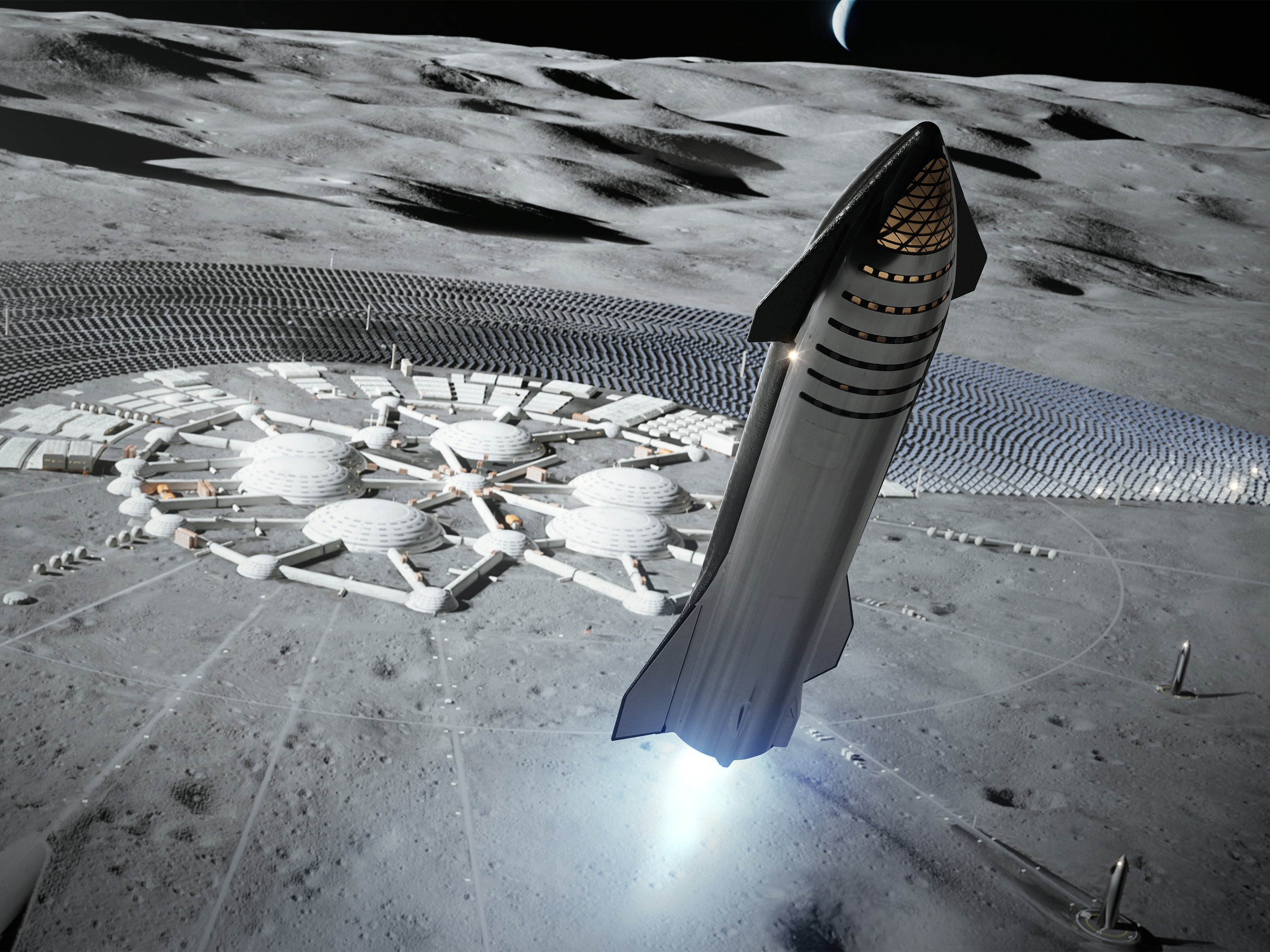- SpaceX founder and CEO Elon Musk plans to launch a prototype of its planned Starship reusable rocket system into orbit in less than six months.
- Musk presented an update on the system at the company’s launch facility in Cameron County, Texas on Saturday.
- SpaceX expects an existing prototype of the system to attempt a 65-foot flight within a month or two.
- The company plans to begin work in the next few months on other prototypes that it expects to reach orbit.
- “This is going to sound totally nuts, but I think we want to try to reach orbit in less than six months,” Musk said.
- Visit Business Insider’s homepage for more stories.
SpaceX founder and CEO Elon Musk believes the company is on the cusp of achieving “the holy grail of space” travel with its planned reusable Starship rocket system.
He aims to put a prototype in orbit in as little as six months.
Musk laid out the ambitious timeline during a presentation at the company’s launch facility in Cameron County, Texas on Saturday. The presentation was delivered 11 years to the day after SpaceX’s first rocket, the Falcon 1, first delivered a payload into space.
The planned Starship system, unlike the Falcon 1, is designed to be fully reusable. Rapidly reusable orbital rocket systems will be key to making space travel practical and affordable, Musk said. Just as cars and planes can make more than one trip per day, he believes rockets will need the ability to make multiple trips to space and back.
"This is basically the holy grail of space," Musk said.
Musk aims to launch the Starship system, which includes a 164-foot stainless-stell rocket, into orbit by early next year.
"This is going to sound totally nuts, but I think we want to try to reach orbit in less than six months," Musk said. "Provided the rate of design improvement and manufacturing improvement continues to be exponential, I think that is accurate to within a few months."
Here's the timeline that Musk laid out during the presentation:
- In one to two months: A smaller Starship prototype, called the Mark 1, is expected to take a controlled, 65-foot flight.
- In a few months: SpaceX will finish building another Starship prototype, the Mark 2. It will begin building other prototypes, including the Mark 3, which should take three months to build, and the Mark 4, which will take four or five months to compete. SpaceX expects to improve the design and manufacturing methods with each of these prototypes.
- In less than six months: SpaceX expects to launch into orbit with either its Mark 4 or 5 prototypes.
After that, Musk plans for SpaceX to launch many more flights to test the reliability of the Starship system.
Musk ultimately intends for the system to be able to ferry people back and forth between Earth and space.
"I think we could potentially see people fly next year," Musk said. "We can do many flights to prove out the reliability very quickly."
However, the company still needs to figure out how to keep human passengers alive with oxygen, food, and water during trips, Musk said.
- Read more of Business Insider's coverage of the SpaceX Starship presentation:
- Elon Musk just unveiled SpaceX's audacious new plan to build cities on Mars with giant Starship rockets. Here are the highlights of his talk.
- Watch live: Elon Musk reveals SpaceX's new plan for Starship, a rocket system designed to populate Mars
- SpaceX just built a shiny 164-foot-tall rocket prototype in South Texas that looks like it came from Mars

